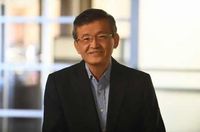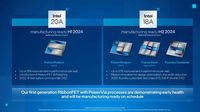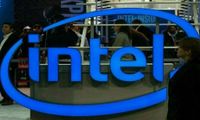In a pivotal moment for Intel, former CEO Pat Gelsinger has extended a warm welcome to the company’s new leader, Lip-Bu Tan, emphasizing the importance of completing the "revitalization" of the tech giant. Gelsinger, who led Intel from 2021 until his ousting in December 2024, expressed optimism about Tan’s ability to navigate the challenges posed by Wall Street’s short-termism while continuing the ambitious IDM 2.0 strategy he initiated.
During a recent interview with CNBC, Gelsinger reflected on his tenure, which marked a significant transformation in Intel’s approach, particularly in its foundry business. He noted that while he was committed to revitalizing the company, the heavy investments required to build a next-generation technology fab network were unsustainable under the pressures of Wall Street’s expectations.
"Building a next-generation fab network requires hefty investments, which simply wasn’t sustainable given Wall Street’s near-term expectations," Gelsinger stated, highlighting the conflict between long-term innovation and immediate financial returns. His IDM 2.0 strategy aimed to position Intel as a world-class foundry, reducing dependency on third-party manufacturers like TSMC.
Despite his departure, Gelsinger remains supportive of Tan, urging him to continue the path laid out in the IDM 2.0 plan. "The role that Intel plays in the semiconductor industry is critical—not just for the industry but for the US," he said. Gelsinger’s remarks reflect a broader concern that the semiconductor sector’s health is tied to the company’s success.
Tan officially took over as CEO on January 1, 2025, and is viewed as a visionary leader with a strong background in semiconductors and venture capital. His immediate plans include significant changes to Intel’s chip manufacturing methods and artificial intelligence strategies, which he believes are essential for reviving the company.
In a town hall meeting following his appointment, Tan indicated that tough decisions would be necessary moving forward, potentially including staff cuts to streamline operations. According to sources familiar with his thinking, Tan’s strategy involves restructuring the company’s approach to AI and revamping manufacturing operations, which have recently been adapted to produce semiconductors for external clients like Nvidia.
Tan’s return comes at a time when Intel is grappling with substantial losses, reporting an annual deficit of $19 billion in 2024, its first since 1986. This financial strain has intensified scrutiny from investors, prompting analysts to speculate on Tan’s plans to stabilize and grow Intel’s foundry business.
UBS analyst Timothy Arcuri believes that Tan will refocus on chip design in the short term while securing major customers to strengthen Intel's foundry services. Reports indicate that Intel is working to finalize commitments from companies like NVIDIA and Broadcom to utilize its semiconductor foundry.
In addition to seeking new clients, Tan is expected to advance Intel’s new 18A manufacturing process, which aims to enhance the company’s competitiveness in the semiconductor market. This includes a lower-power version of the 18A process, known as 18AP, which is anticipated to appeal to chip companies.
Moreover, Tan’s strategy appears to align closely with Gelsinger’s vision, particularly in transforming Intel into a contract chip manufacturer that can compete with leading firms like TSMC. However, the path forward is fraught with challenges, as Tan must balance long-term investments necessary for the IDM 2.0 strategy with the short-term financial returns demanded by investors.
Intel partners have expressed a mix of optimism and concern regarding Tan’s leadership. While some are hopeful that his outside perspective will revitalize the company, others worry about potential job cuts and the impact on Intel’s channel investments. As the first CEO in Intel’s history without prior employee experience, Tan’s approach will be closely scrutinized by both partners and investors.
Industry experts have pointed out that Gelsinger’s tenure was marked by a reluctance to make tough personnel decisions, which may have contributed to Intel’s struggles. Dylan Patel, a semiconductor industry expert, criticized Gelsinger for being “too nice” and suggested that Tan’s leadership style may be more decisive.
As Tan implements his vision, he is expected to prioritize profitability and align Intel’s operations with the expectations of Wall Street. His ability to attract significant customers and improve performance at Intel Foundry will be crucial in determining the company’s future.
Furthermore, Tan’s plans to restart the production of chips for AI servers and explore new areas such as robotics and software indicate a strategic pivot aimed at regaining lost ground in the rapidly evolving semiconductor landscape. However, analysts caution that the first new AI chip may not be available until 2027 at the earliest, underscoring the long-term nature of these initiatives.
In conclusion, Lip-Bu Tan’s leadership marks a new chapter for Intel, one that carries the weight of high expectations and significant challenges. As he embarks on this journey, the semiconductor giant stands at a crossroads, with its future hinging on the successful execution of the IDM 2.0 strategy and the ability to navigate the pressures of a demanding market.





